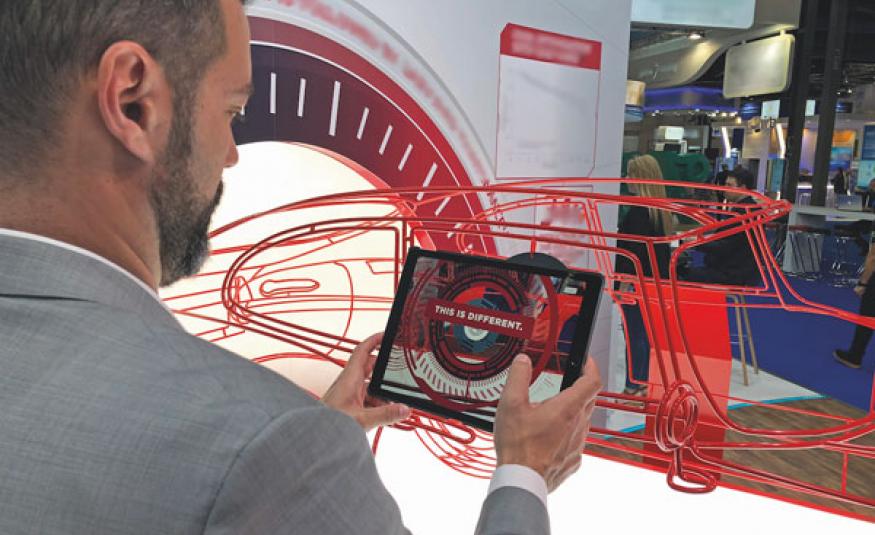Karl Hindson (pictured below), Creative Engagement Group's head of technology, on introducing interactive tech at events
The inspiration for my recent talk at Confex came from a brief we received for a medical conference from a pharma client. “We want something completely different,” they said. Which was great as a challenge, but something to be cautious about, considering Pharma regulations and being respectful of their brand and product.
Our approach is to always create the unforgettable, making the experience memorable in order to transform perception or deepen knowledge or indeed change behaviours. To achieve this we divide the audience into three groups – ‘Skimmers’, ‘Paddlers’, and ‘Deep Divers’. Skimmers tend to walk on by the stand, have little or no relationship with the brand or the people on the stand.The task is twofold, one of conversion – of skimmers to paddlers, and paddlers to deep divers, the other to provide the right level of information, in the right way, at the right time to each distinct audience group.
Understanding this audience is especially important when introducing immersive technology. In this case, these were doctors and professors with very limited time to engage.
With this in mind, we started with an eye-catching physical representation of an e-type Jaguar made from steel wire. This was unusual, not at all what people expected to see at a medical conference, but it played on the brand’s messaging of ‘this is different’ and grabbed people’s attention.
Then we introduced the AR. We needed to provide information, at the right level, quickly to encourage each distinct audience group to interact more with the stand so we used ‘light touch AR’ – iPad interaction providing some simple animation and information. And we were able to track exactly where people were located through the four iPads on the stand.
This experience highlights the relative benefits of Augmented and Virtual Reality. VR is very immersive but it’s also a solo experience, whereas AR can be more social, quick, and easy, and people are less reluctant to pick up an iPad when they’re in a hurry.
To conclude, there are five lessons to follow when introducing AR and other immersive technology at events:
- Think about ‘why’
There’s a lot of buzz around AR and VR. But calm down and think about the event and the target audience, what is the story you want to tell, is this best choice for the message?
- Keep the flow
If you’re using AR or VR, make sure that there’s still a good flow around the stand, that people using the devices don’t block delegates.
- Instinctive, or not
Delegates need encouragement to get the most from the experience, otherwise they just walk off. So have people on hand to help them interact with devices.
- Client sign off
Don’t rely on presentation decks and a Skype call to talk a client through immersive technology. Meet face-to-face and show them your models and thinking.
- Logistics
The set-up’s vital with immersive technology. Make sure the cables aren’t intrusive and that you have enough devices to rotate and charge.







